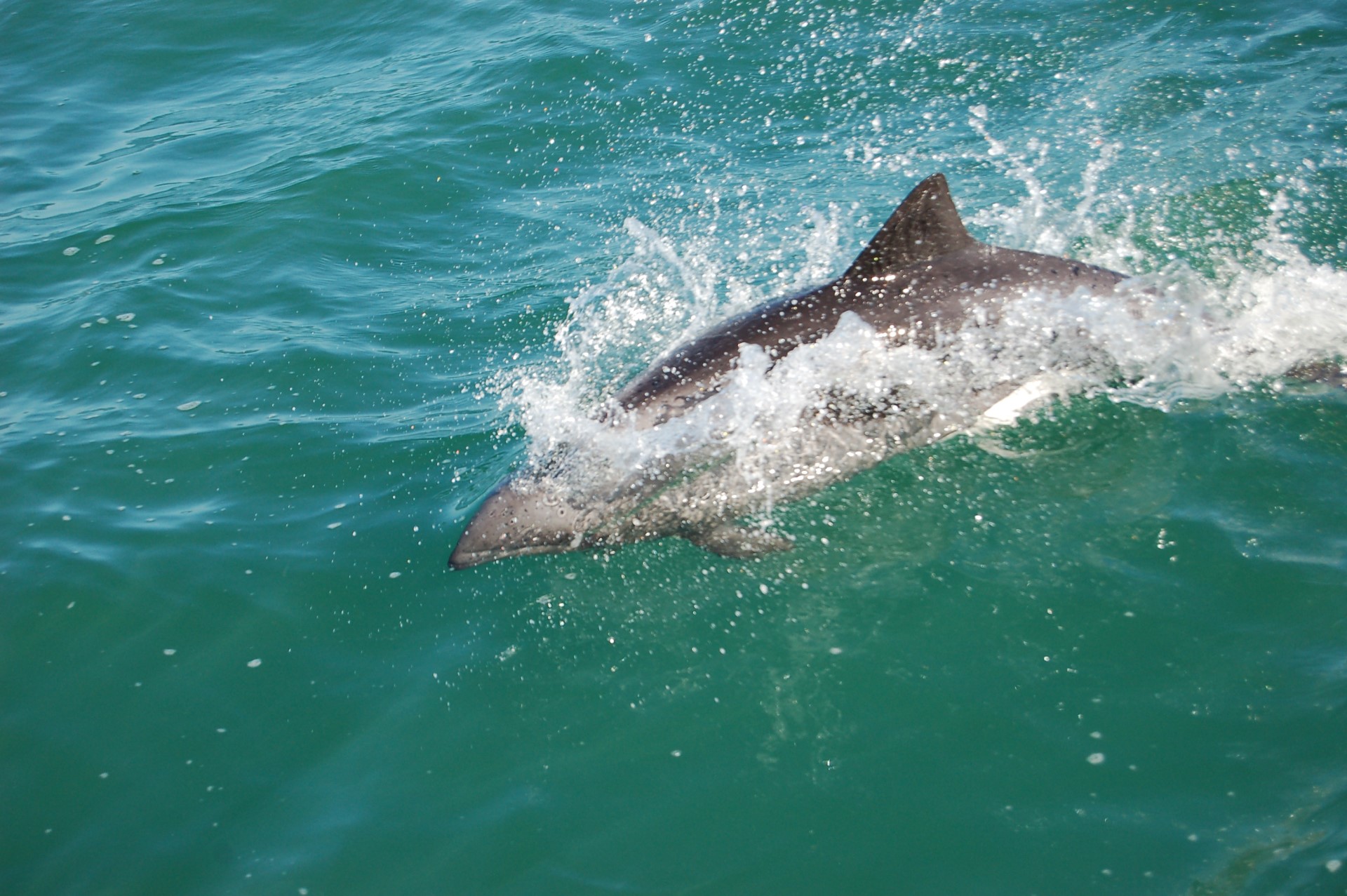
Haviside Dolphin
Heaviside’s dolphin is one of four dolphins in the genus Cephalorhynchus. The small cetacean is endemic to the Benguela ecosystem along the southwest coast of Africa. Heaviside’s are small and stocky with adults reaching a maximum length of 1.7m and weight of75 kg. The dolphin has a distinct black, grey and white body pattern, making it hard for it to be confused with any other dolphin found in the same waters. The head is cone shaped with a blunt beak. The dorsal fin is triangular in shape and centred in the middle of the back. The head and thorax are coloured light grey with darker patches around the eye. The dorsal fin,& fluke and dorsal cape are a dark grey to almost black with a band that extends forward from the dorsal fin to the blowhole. The underbelly is white, with bands that extend onto the lower rear of the body. Small white patches are located just behind the pectoral fins and a single white patch extends between these fins on the chest. Sexual dimorphism is minimal, however variation in the shape of the white patch covering the genital slit is distinct between genders. In males, the patch ends in a point, but in females widens out to cover the mammary slits.
Information on reproduction is limited for Heaviside’s dolphins, however they are thought to be comparable to Hector’s and Commerson’s dolphins. Females and males reach sexual maturity approximately between 5–9 years. Mating is thought to occur year-round, however individual females may only produce calves every 2–4 years. Gestation time is unknown. Maximum known lifespan is based on the oldest recorded individual at 26 years old. Levels of predation are unknown, however killer whales(Orcinus orca) are known predators and there is evidence of shark attack from body scars.
Heaviside’s have small home ranges of 50–80km as measured using satellite telemetry over 2–3 months and photographic resighting over up to 3 years.
Some individuals have been resighted at the same location for up to 10 years. Prior to 2018, the “International Union for Conservation of Nature” International Union for Conservation of Nature (IUCN) listed the Heaviside’s as ‘Data Deficient’ however, as of 2017 the status was changed to ‘Near Threatened’, owing to improved knowledge on the species from multiple studies. Despite this, the overall population trend remains unknown, and there are many aspects of the species biology that remain to be studied. Heaviside’s dolphin is listed on Appendix II of the “Convention on the Conservation of Migratory Species of Wild Animals” Convention on the Conservation of Migratory Species of Wild Animals Memorandum of Understanding Concerning the Conservation of the Manatee and Small Cetaceans of Western Africa and Macaronesia. Memorandum of Understanding Concerning the Conservation of the Manatee and Small Cetaceans of Western Africa and Macaronesia. The Memorandum of Understanding was established in 2008 and aims to protect these species at a national, regional and global level.
Below here is a video of some of these dolphins, and below that is our usual list of articles on this species (we hope this number will increase in the near future).
Below this, we will add links for you to go and see these dolphins for yourself